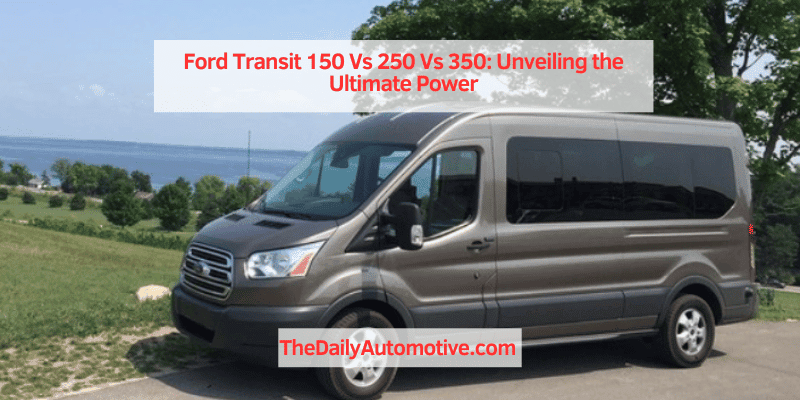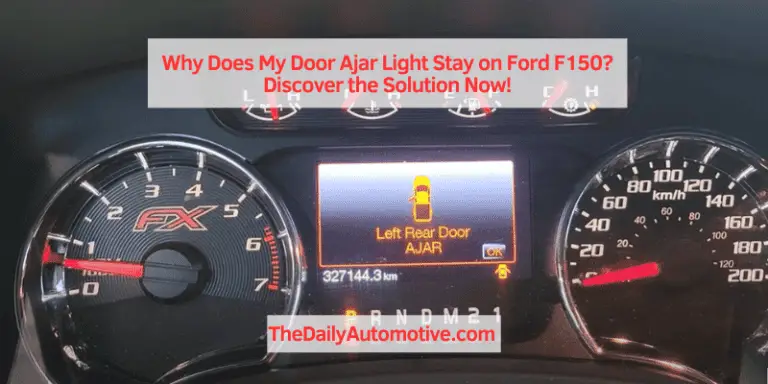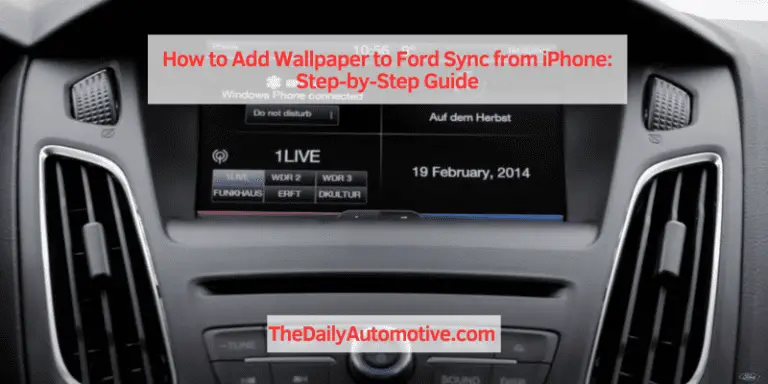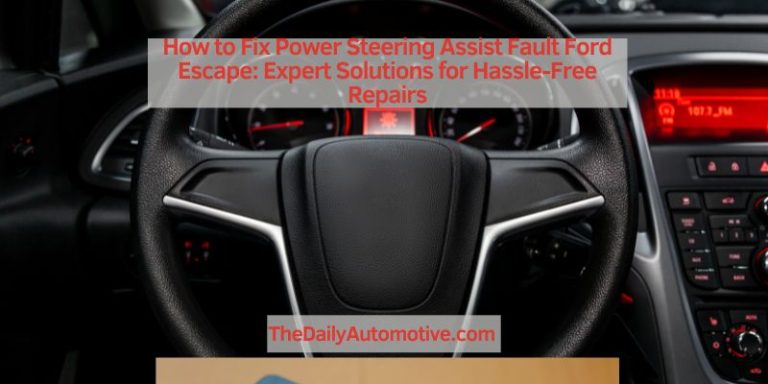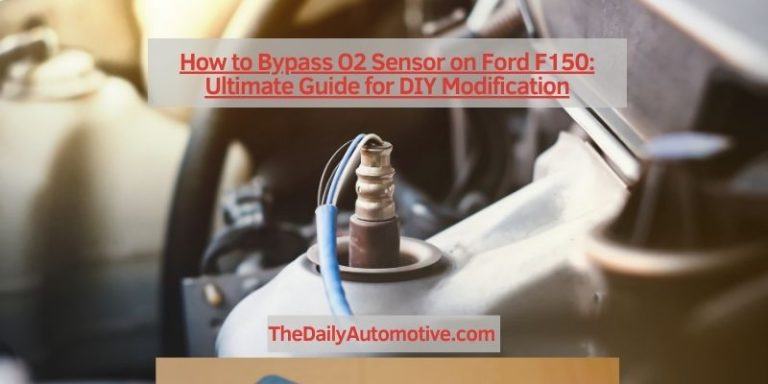Ford Transit 150 Vs 250 Vs 350: Unveiling the Ultimate Power
The Ford Transit 150, 250, and 350 are all great options for different needs and budgets. We will compare and discuss the features, specifications, and capabilities of each model to help you make an informed decision.
Whether you’re looking for a versatile and efficient vehicle for personal use or a powerful and reliable workhorse for your business, the Ford Transit lineup has something for everyone. Let’s dive in and explore the key differences between the Transit 150, 250, and 350 to find the perfect fit for your requirements.
Understanding The Ford Transit Lineup
The Ford Transit lineup offers a range of versatile options, including the Transit 150, 250, and 350 models. Each model has its own unique features, allowing businesses to choose the right fit for their specific needs. Whether you require a lighter payload or heavy-duty capabilities, the Ford Transit lineup has you covered.
The Ford Transit lineup offers a range of versatile and reliable commercial vans that cater to a variety of business needs. Whether you’re looking for a compact van or a heavy-duty workhorse, the Transit lineup has you covered. In this section, we’ll explore what the Ford Transit is and how it has evolved over the years.
What Is The Ford Transit?
The Ford Transit is a lineup of commercial vans manufactured by Ford Motor Company. It was first introduced in 1965 and has since become one of the most popular commercial van options on the market. The Transit is known for its durability, flexibility, and efficiency, making it an ideal choice for businesses of all sizes.
Here are some key features of the Ford Transit:
- Spacious Interior: The Transit offers ample cargo space, allowing you to transport goods and equipment with ease. It can accommodate various payloads, making it suitable for a wide range of industries.
- Versatility: The Transit lineup includes various models, each designed to serve different purposes. From passenger transport to cargo hauling, there’s a Transit model to fit every business need.
- Advanced Safety Features: Ford prioritizes safety, and the Transit lineup reflects this commitment. With features like a rearview camera, blind-spot monitoring, and lane-keeping assist, the Transit helps keep drivers and passengers safe on the road.
- Efficient Performance: The Transit is equipped with powerful and fuel-efficient engines, ensuring that you can get the job done without breaking the bank on fuel costs.
Evolution Of The Ford Transit Lineup
Over the years, the Ford Transit lineup has undergone significant evolution, adapting to changing market demands and technological advancements. Here’s a brief look at how the Transit lineup has evolved:
- First Generation: Introduced in 1965, the first-generation Transit featured a classic boxy design and offered a range of engine options to suit different needs.
- Second Generation: The second-generation Transit, launched in 1978, introduced a more modern and aerodynamic design. It offered improved fuel efficiency and performance compared to its predecessor.
- Third Generation: In 2000, the third-generation Transit was introduced, featuring a more streamlined and contemporary look. It incorporated advanced safety and convenience features, making it a popular choice among businesses.
- Current Generation: The current generation of the Ford Transit lineup, introduced in 2013, boasts a sleek and stylish exterior design. It offers a host of advanced technology and connectivity features, enhancing productivity and comfort for drivers and passengers alike.
The Ford Transit lineup provides a range of commercial vans that are dependable, versatile, and equipped with the latest features. Whether you need a compact van for city driving or a heavy-duty vehicle for rugged terrains, there’s a Transit model to suit your business needs.
With its rich history and continuous evolution, the Ford Transit remains a top choice for businesses worldwide.
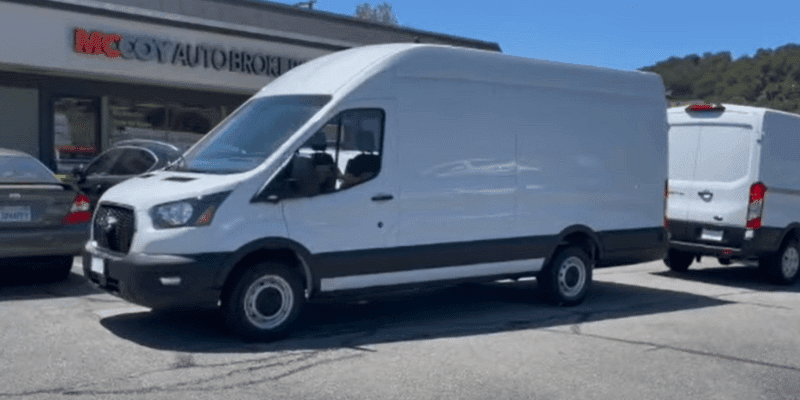
Power And Performance Comparison
The Ford Transit 150, 250, and 350 offer various options for power and performance. Each model has its unique strengths, making it essential to compare their capabilities when choosing the right one for your needs.
The Ford Transit lineup offers a range of options for those in need of a reliable and powerful van. With the Transit 150, 250, and 350 models available, it can be challenging to determine which one is best suited to your needs.
In this section, we will compare the power and performance of these three models, focusing on the engine options, horsepower and torque variations, as well as fuel efficiency and towing capacity.
Engine Options For The Ford Transit 150, 250, And 350:
- The Ford Transit 150 comes equipped with a standard 3.5-liter V6 engine, providing ample power for everyday driving needs.
- For those requiring more muscle, the Transit 250 offers two available engine options. The base engine is a 3.5-liter V6, but you can also opt for a 3.5-liter EcoBoost V6 engine, which delivers even more power and performance.
- The Transit 350 takes it a step further with a standard 3.5-liter EcoBoost V6 engine, ensuring you have all the power you need, whether you are tackling steep hills or hauling heavy loads.
Horsepower And Torque Variations:
- The Transit 150 produces 275 horsepower and 262 lb-ft of torque, providing a solid performance for daily driving.
- Stepping up to the Transit 250 with the base engine will give you 275 horsepower and 262 lb-ft of torque, similar to the Transit 150. However, if you choose the EcoBoost V6 engine, you can enjoy an impressive 310 horsepower and 400 lb-ft of torque, making it ideal for more demanding tasks.
- The Transit 350, with its standard EcoBoost V6 engine, offers the same impressive power as the Transit 250 EcoBoost, with 310 horsepower and 400 lb-ft of torque.
Fuel Efficiency And Towing Capacity:
- When it comes to fuel efficiency, the Transit 150 leads the way, offering an EPA-estimated 18 MPG in the city and 25 MPG on the highway.
- Both the Transit 250 and 350, with their EcoBoost V6 engines, provide slightly lower fuel efficiency, with an EPA-estimated 16 MPG in the city and 22 MPG on the highway.
- Towing capacity is an essential factor for many van owners. The Transit 150 has a maximum towing capacity of up to 6,200 pounds, while the Transit 250 and 350 both have a maximum towing capacity of up to 6,800 pounds when properly equipped.
Each model of the Ford Transit offers a range of engine options to suit different needs. The Transit 150 is a reliable option for everyday driving, while the Transit 250 and 350 provide more power and higher towing capacity. Consider your specific requirements to determine which model is the best fit for your business or personal needs.
Size And Payload Capacity Differences
The Ford Transit 150, 250, and 350 models vary in size and payload capacity. Each model offers different options to suit various transportation needs, providing customers with choices based on their specific requirements.
Comparing Cargo Space And Payload Capacity Of The Transit Models
The Ford Transit lineup offers three models – the Transit 150, Transit 250, and Transit 350. Each model has its own unique characteristics and is designed for different businesses with varying cargo needs. In this section, we will explore the size and payload capacity differences of these Transit models.
Ford Transit 150: Ideal For Small Businesses With Light Loads
- Cargo space: The Transit 150 provides ample cargo space suitable for small businesses that don’t require a large hauling capacity. It offers a practical solution for transporting goods, equipment, or tools.
- Payload capacity: With its lighter construction, the Transit 150 has a lower payload capacity compared to the other models in the Transit lineup. It is designed to accommodate lighter loads, making it a perfect choice for businesses with less demanding hauling requirements.
Ford Transit 250: Balancing Versatility And Capacity
- Cargo space: The Transit 250 strikes a balance between cargo space and payload capacity. It offers a versatile interior with ample room for storing goods and equipment efficiently. Whether you need to transport bulky items or make multiple deliveries, the Transit 250 can accommodate your needs.
- Payload capacity: With its sturdier build, the Transit 250 has a higher payload capacity than the Transit 150. It is capable of handling heavier loads while still maintaining its maneuverability and ease of use.
Ford Transit 350: Maximum Payload Capability
- Cargo space: The Transit 350 provides the largest cargo space among the three models. It offers a cavernous interior that can accommodate a wide range of items, making it an excellent choice for businesses that require significant hauling capacity.
- Payload capacity: The Transit 350 boasts the highest payload capacity in the Ford Transit lineup. It is designed to handle heavy loads and can easily transport goods, equipment, or materials with ease.
The Ford Transit models differ in their size and payload capacity, catering to various business needs. The Transit 150 is ideal for small businesses with light loads, the Transit 250 strikes a balance between versatility and capacity, while the Transit 350 offers maximum payload capability.
Choose the model that best aligns with your business requirements and enjoy the benefits of an efficient and reliable cargo van.
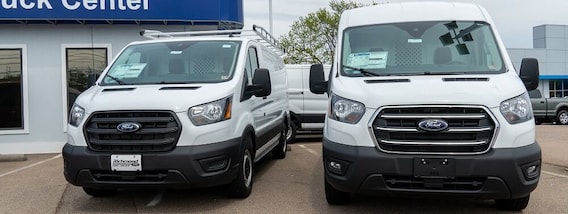
Credit: www.richmondcommercialtrucks.com
Vehicle Configurations And Features
The Ford Transit 150, 250, and 350 offer various vehicle configurations and features. These models provide options for different needs and purposes, allowing customers to choose based on their requirements. Consider factors such as payload capacity, towing capacity, and engine power when deciding between these options.
Ford Transit is a versatile and reliable vehicle that offers multiple configurations and features to cater to various needs. Whether you’re in the market for a passenger van or a cargo van, the Transit lineup has you covered with its 150, 250, and 350 models.
In this section, we’ll explore the key differences in available configurations and highlight the standard and optional features offered by each model.
Differences In Available Configurations (Passenger Vs Cargo Van):
- Passenger Van:
- The Transit 150, 250, and 350 models are available in passenger van configurations, making them ideal for group transportation or shuttle services.
- Ample seating capacity, ranging from 8 to 15 passengers, depending on the model.
- Provides comfortable seating and cabin amenities to ensure a pleasant journey.
- Spacious cargo area behind the rear seats to accommodate luggage or other belongings.
- Cargo Van:
- The Transit 150, 250, and 350 models also offer cargo van configurations for businesses and individuals requiring a dependable and versatile work vehicle.
- The cargo area is designed to maximize storage capacity, with various roof heights and wheelbase options to suit different needs.
- Easy loading and unloading through rear swing-out doors or available sliding side doors.
- Customizable interior options allow for efficient organization of tools, equipment, and cargo.
Standard And Optional Features Offered:
- Standard Features:
- All models come equipped with Ford’s AdvanceTrac® with Roll Stability Control™, providing enhanced stability and control on the road.
- Safety features such as front and side-impact airbags, traction control, and a rearview camera are standard across the Transit lineup.
- Power windows, remote keyless entry, and a tilt/telescoping steering column ensure convenience and comfort.
- Optional Features:
- Advanced technology options include Ford SYNC® 3 with voice recognition, touch screen display, and smartphone integration for seamless connectivity.
- Upgraded audio systems, including SiriusXM® satellite radio and HD Radio™, offer enhanced entertainment options during the journey.
- Available features like a navigation system, automatic climate control, and leather-trimmed seats add a touch of luxury to the Transit experience.
Key Features Of Each Model:
- Ford Transit 150:
- Offers a balance between performance and affordability.
- Multiple engine options to choose from, including a capable V6 and a turbocharged EcoBoost® V6.
- Available in both passenger and cargo van configurations to meet varying requirements.
- Ford Transit 250:
- Provides increased payload capacity and towing capability compared to the Transit 150.
- Allows for greater customization with various roof heights and wheelbase lengths.
- Suitable for businesses needing a versatile and robust work vehicle.
- Ford Transit 350:
- Offers the highest payload and towing capacities in the Transit lineup.
- Ideal for heavy-duty work, capable of hauling larger loads and towing substantial trailers.
- Provides additional options for higher roof heights, allowing for more comfortable movement within the cabin.
With its range of configurations and features, the Ford Transit 150, 250, and 350 models ensure there’s a suitable option for passenger transportation or cargo-carrying needs. Whether you’re running a business, organizing group outings, or require a reliable work vehicle, the Transit lineup has you covered with its versatility, performance, and comfort.
Technology And Safety Features
The Ford Transit 150, 250, and 350 models offer advanced technology and safety features. With innovative systems like blind spot monitoring, collision warning, and lane-keeping assist, these vehicles provide a secure driving experience.
Advanced Technology Integration In The Transit Lineup
The Ford Transit lineup, which includes the 150, 250, and 350 models, offers a range of impressive technology features. These advanced integrations are designed to enhance the driving experience and provide convenience and safety for both drivers and passengers. Here are some key technology features you can expect to find in the Ford Transit lineup:
- Ford Co-Pilot360: This comprehensive suite of driver-assist technologies helps you navigate the road with confidence. It includes features such as Pre-Collision Assist with Automatic Emergency Braking, BLIS® (Blind Spot Information System) with Cross-Traffic Alert, Lane-Keeping System, and a rearview camera. These features work together to help prevent collisions and keep you aware of your surroundings.
- SYNC® 3 with Apple CarPlay and Android Auto: The intuitive SYNC® 3 system allows you to connect your compatible smartphone to access apps, make calls, and play music through voice commands or the 8-inch touchscreen display. With Apple CarPlay and Android Auto compatibility, you can easily access your favorite maps, messages, and music apps while keeping your hands on the wheel.
- Wireless charging pad: Say goodbye to tangled cords with the available wireless charging pad in the Ford Transit. Simply place your compatible device on the pad, and it will charge without the need for cables or adapters. This convenient feature ensures that your devices stay powered up while on the go.
- FordPass Connect: Stay connected wherever you go with FordPass Connect. This feature allows you to remotely start your vehicle, lock and unlock doors, and even locate your parked vehicle. Additionally, with the FordPass app, you can access important vehicle information, such as fuel levels and vehicle health reports, right from your smartphone.
- High-Capacity Upfitter Switches: For those who need to customize their vehicle for specific tasks or professions, the Transit lineup offers high-capacity upfitter switches. These switches can be customized to power various accessories, such as lights, refrigeration units, or tools, making it easier to adapt the vehicle to your specific needs.
Safety Features Across All Models
When it comes to safety, the Ford Transit lineup is designed with your peace of mind in mind. Whether you choose the Transit 150, 250, or 350, you can expect to find a range of safety features that help protect you and your passengers.
Some of the safety features that come standard across all models include:
- AdvanceTrac® with Roll Stability Control™: This electronic stability control system helps you maintain control of your vehicle during sudden maneuvers or on slippery road surfaces. It detects wheel slip, vehicle roll motion, and yaw motion, and applies individual brakes and reduces engine power as needed to keep you on track.
- Safety Canopy® System: In the event of a rollover or side-impact collision, the Safety Canopy® System deploys side-curtain airbags throughout the passenger compartment. These airbags provide an extra layer of protection for both front and rear outboard occupants, helping to reduce the risk of head and neck injuries.
- Tire Pressure Monitoring System: The Ford Transit lineup features a standard tire pressure monitoring system that alerts you if any of your tires are underinflated. This helps improve safety and fuel efficiency by ensuring that your tires are properly inflated at all times.
- Anti-Lock Braking System (ABS): The ABS helps maintain steering control during emergency braking situations by preventing the wheels from locking up. This feature allows you to maintain control and steer around obstacles while braking hard.
- Trailer Sway Control: If you frequently tow a trailer, you’ll appreciate the Trailer Sway Control feature in the Ford Transit lineup. This system helps detect trailer sway and automatically applies individual brakes and reduces engine torque to help stabilize both the vehicle and the trailer.
How Technology Enhances The Driving Experience
The advanced technology features found in the Ford Transit lineup not only prioritize safety but also enhance the overall driving experience. Here’s how technology enhances the driving experience in the Ford Transit:
- Convenience: With features like Ford Co-Pilot360 and FordPass Connect, the Transit lineup offers convenience like never before. From remote start and vehicle location services to comprehensive driver-assist technologies, these features make your journey more comfortable and stress-free.
- Entertainment: SYNC® 3 with Apple CarPlay and Android Auto lets you seamlessly integrate your smartphone into your vehicle, providing access to your favorite music, podcasts, and navigation apps. With voice commands and a responsive touchscreen, you can easily control your entertainment options without taking your eyes off the road.
- Safety: The safety features in the Ford Transit lineup work in harmony to provide a safe and secure driving experience. Whether it’s the advanced driver-assist technologies, the stability control systems, or the monitoring systems, each feature is designed to keep you and your passengers protected from potential hazards on the road.
- Customization: The high-capacity upfitter switches in the Ford Transit lineup allow you to customize your vehicle to suit your specific needs. Whether you’re a contractor, delivery driver, or mobile business owner, these switches give you the flexibility to power the necessary accessories for your profession.
The Ford Transit lineup offers a range of advanced technology features and safety systems that enhance the driving experience. From driver-assist technologies to convenience and entertainment features, the Transit lineup ensures that you can drive with confidence and enjoy every journey.
Pricing And Cost Considerations
Comparing the pricing and cost considerations of the Ford Transit 150, 250, and 350 models reveals differences in features and capabilities. These distinctions, combined with varying price points, allow buyers to choose a model that best fits their needs and budget.
Ford Transit vans are a popular choice for businesses and individuals looking for reliable and versatile vehicles. With various models available, including the Ford Transit 150, 250, and 350, it’s important to consider pricing and cost factors when making a decision.
In this section, we’ll dive into the base prices of each model, additional costs for upgrading and customizing, as well as long-term cost considerations such as maintenance and fuel economy.
Base Prices For The Ford Transit 150, 250, And 350:
- Ford Transit 150: The base price for the Ford Transit 150 starts at $34,510. This model offers a range of features and capabilities suitable for small businesses or personal use.
- Ford Transit 250: With a slightly higher base price of $36,750, the Ford Transit 250 provides additional power and payload capacity compared to the Transit 150. It is a great option for those who require more hauling capability.
- Ford Transit 350: The Ford Transit 350, starting at $38,985, offers the highest payload capacity and towing capabilities among the three models. It is designed to handle heavier loads and is ideal for heavy-duty commercial use.
Additional Costs For Upgrading And Customizing:
- Upgraded Engines: If you require more power or specialized performance, Ford offers optional engine upgrades for the Transit vans. These upgrades come at an additional cost and can enhance the vehicle’s capabilities based on your specific needs.
- Customization Options: Ford Transit vans can be customized to meet various requirements, such as adding shelving, partitions, or specialty equipment. These customizations may increase the overall cost of the vehicle but can greatly improve efficiency and functionality for specific industries.
Long-Term Cost Considerations (Maintenance, Fuel Economy):
- Maintenance: Like any vehicle, regular maintenance is essential to keep your Ford Transit running smoothly. Oil changes, tire rotations, and routine inspections are some of the maintenance tasks to consider. Keeping up with maintenance can help prevent costly repairs down the road.
- Fuel Economy: The fuel economy of the Ford Transit vans varies depending on the model, engine choice, and driving conditions. Choosing a model with better fuel efficiency can help lower long-term operating costs. It’s important to consider your typical usage and the fuel economy ratings when making a decision.
When considering the pricing and cost aspects of Ford Transit vans, it’s essential to evaluate the base prices of each model, additional costs for upgrading and customizing, as well as long-term cost considerations such as maintenance and fuel economy. Understanding these factors will help you make an informed decision and find the Ford Transit van that best meets your needs and budget.
User Reviews And Feedback
Comparing the user reviews and feedback for the Ford Transit 150, 250, and 350 reveals valuable insights about their performance and capabilities. These firsthand experiences help potential buyers make informed decisions based on real-life perspectives.
The Ford Transit, available in three models – 150, 250, and 350 – is a popular choice among commercial vehicle owners. But what do the users have to say about these models? In this section, we will explore user reviews and feedback for each model and compare them to expert opinions.
Pros And Cons Of The Ford Transit Models According To Users:
According to user reviews, the Ford Transit models have their own strengths and weaknesses. Here are the pros and cons mentioned by users:
Ford Transit 150:
- Excellent fuel efficiency for a commercial vehicle: Users appreciate the Transit 150’s fuel efficiency, making it cost-effective for long-distance travels.
- Maneuverability in urban settings: The smaller size of the Transit 150 allows for easier navigation in tight city streets and parking spaces.
- Limited payload capacity: Some users find the payload capacity of the Transit 150 to be relatively lower compared to the larger models.
Ford Transit 250:
- Increased payload capacity: Users highlight the Transit 250’s ability to handle larger loads, making it suitable for heavier cargo transportation.
- Enhanced towing capabilities: The Transit 250 offers improved towing capabilities, allowing users to haul trailers and equipment with ease.
- Reduced maneuverability: Due to its larger size, some users mention that the Transit 250 may be slightly more challenging to maneuver in congested urban areas.
Ford Transit 350:
- Impressive towing capacity: Users praise the Transit 350 for its exceptional towing capacity, making it ideal for heavy-duty towing requirements.
- Ample cargo space: The larger dimensions of the Transit 350 offer substantial cargo space, accommodating a wide range of items.
- Lower fuel efficiency: Some users note that the Transit 350 consumes more fuel compared to the smaller models, which can impact operating costs.
Real-World Experiences Shared By Transit Owners:
It’s worth considering the real-world experiences shared by Ford Transit owners. Here are some insights shared by users:
- Reliability and durability: Many owners appreciate the overall reliability and durability of the Ford Transit, stating that it holds up well even under demanding conditions.
- Comfortable interior: Users commend the comfortable seating and well-designed interior of the Transit, making long journeys more enjoyable.
- Versatility for customization: Owners like the flexibility in customizing the interior layout to suit their specific needs, whether it be for cargo transportation or passenger seating.
Comparing User Feedback To Expert Opinions:
When comparing user feedback to expert opinions, it is clear that the Ford Transit models generally live up to their reputation. While user reviews highlight specific pros and cons, expert evaluations often align with these observations. Both user feedback and expert opinions contribute valuable insights into the performance, capabilities, and suitable applications of each Ford Transit model.
Remember, it’s crucial to consider user feedback alongside expert opinions to make an informed decision when choosing the right Ford Transit model for your commercial needs.
Frequently Asked Questions For Ford Transit 150 Vs 250 Vs 350
What Is The Difference Between Transit 150 250 And 350?
Transit 150, 250, and 350 are different variants of the Ford Transit van with varying weight capacities.
What Is The Difference Between A Transit 250 And 350?
The main difference between a transit 250 and 350 is the weight capacity. Transit 350 has a higher weight capacity than the transit 250.
What Is The Difference Between A Transit 150 And A Transit 250?
The Transit 150 has a lower weight capacity compared to the Transit 250. The Transit 250 can carry more load than the Transit 150. The Transit 250 has a higher weight rating than the Transit 150. The Transit 150 is designed for lighter hauling needs while the Transit 250 is suitable for heavier loads.
What Does The 350 Mean In Ford Transit?
The “350” in Ford Transit refers to the vehicle’s weight capacity rating of 3,500 pounds.
Conclusion
Overall, the Ford Transit 150, 250, and 350 are exceptional vehicles that cater to different needs and preferences. The Transit 150 provides a reliable and efficient option for those who prioritize fuel economy and maneuverability. On the other hand, the Transit 250 offers a balance between fuel efficiency and payload capacity, making it suitable for businesses that require a bit more hauling power.
Finally, the Transit 350 is the ultimate choice for heavy-duty applications, with its impressive payload and towing capabilities. With a range of engine options and various configurations available, the Ford Transit lineup ensures that there is a van to suit every business requirement.
When considering which model is right for you, it is important to evaluate factors such as payload needs, towing requirements, and budget limitations. By understanding your specific needs and comparing the features of each model, you can confidently choose the Ford Transit that will help your business thrive.
Upgrade your business with a Ford Transit today!

